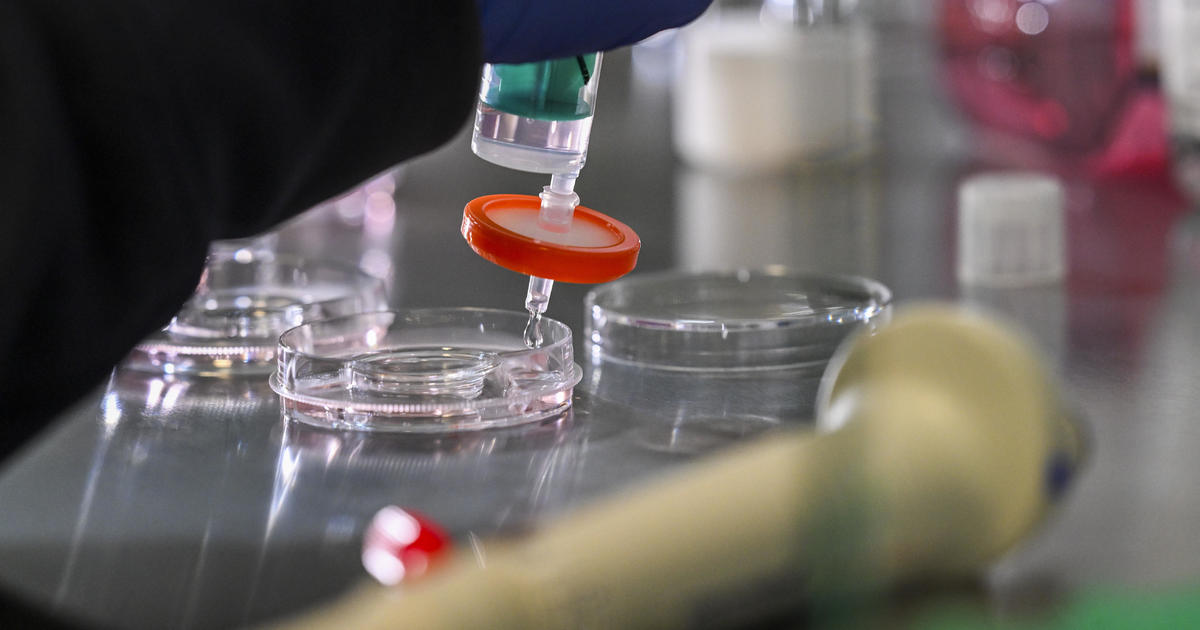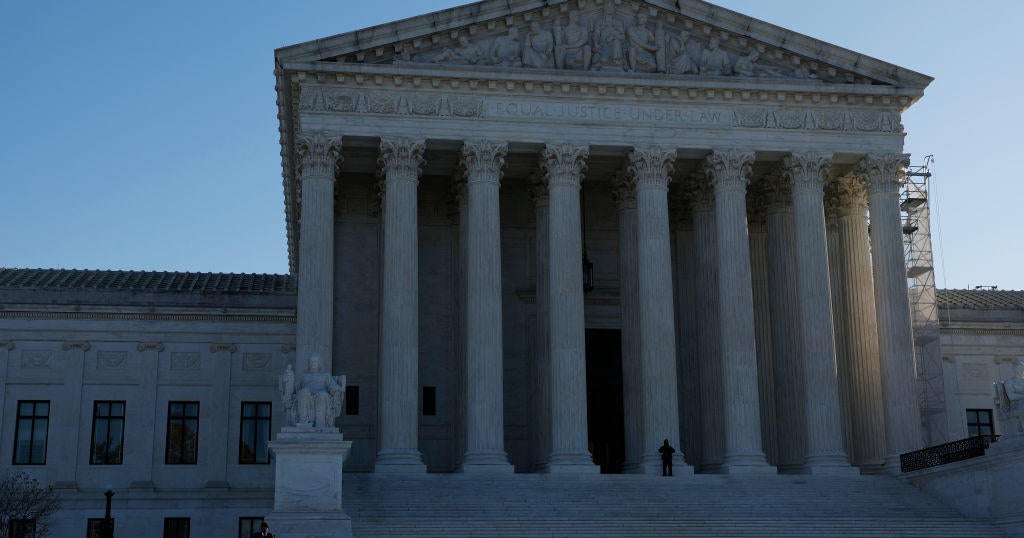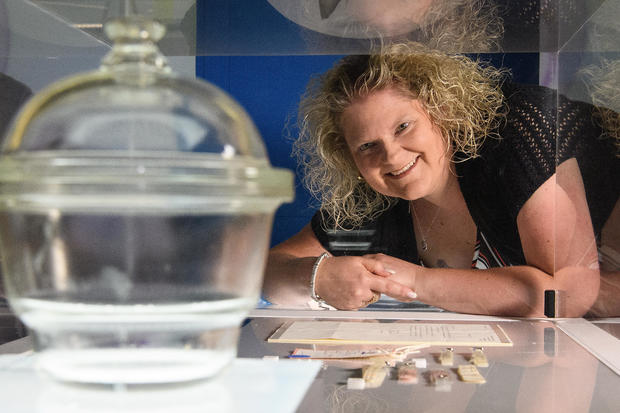CBS News
How does IVF work? The medicine behind in vitro fertilization, explained by an expert

Heidi Collins Fantasia is an associate professor of nursing at University of Massachusetts, Lowell.
Since the overturning of Roe v. Wade in June 2022 ended the federal right to abortion, legislative attention has extended to many other aspects of reproductive rights, including access to assisted reproductive technologies such as in vitro fertilization, or IVF, after an Alabama Supreme Court ruling in February 2024.
University of Massachusetts, Lowell associate professor and department chair of the school of nursing Heidi Collins Fantasia explains how this decades-old procedure works and what its tenuous legal status means for prospective parents.
What is IVF?
IVF is a type of artificial reproductive technology that allows people with a range of fertility issues to conceive a child. It involves fertilizing an egg with sperm outside the body to form an embryo that is then transferred into the uterus to develop.
IVF is used as a treatment for infertility, which the American Society for Reproductive Medicine defines as an inability to achieve pregnancy “based on a patient’s medical, sexual, and reproductive history, age, physical findings, diagnostic testing” or the “need for medical intervention.”
While originally developed as a fertility treatment for blocked fallopian tubes, IVF is currently used for other conditions such as low sperm count or when the cause for infertility can’t be determined. LGBTQ people and single parents can also use IVF and other reproductive technologies to grow their families.
How does IVF work?
Typically during IVF, a patient takes hormones to stimulate the ovaries to produce eggs. Once a health professional retrieves the eggs using an ultrasound and a thin needle, they either incubate the sperm with the egg or inject the sperm into the egg in the lab to fertilize it. Which specific type of IVF procedure a patient undergoes is determined on an individual basis with a health care provider.
Scientists began to develop IVF in the 1930s, beginning with the live birth of rabbits and mice through the procedure. This research eventually led to the birth of the first “test-tube baby” in 1978. Physiologist Robert Edwards received the 2010 Nobel Prize in physiology or medicine for his research on IVF.
LEON NEAL / Getty Images
The technology has rapidly expanded since the first live human birth from IVF. The development of cryopreservation, or the freezing of human eggs and embryos, has enabled people to pursue pregnancy later in life. Genetic screening of cells from a developing embryo can identify genetic diseases and abnormalities.
The chance of a successful live birth through assisted reproductive technologies varies. Success rates depend on many factors, such as underlying cause of infertility, age and type of technology used.
Who currently has access to IVF?
Use of IVF has steadily increased since it was first introduced. In 2015, about 2% of all infants in the U.S. were conceived as a result of IVF, and public support for IVF is high overall.
Approximately 10% of women in the U.S. have used some type of fertility service to achieve a pregnancy. This includes fertility advice, medications to increase ovulation, fertility testing, surgery and IVF.
Because infertility increases with age, women older than 35 typically use these services more often than younger women. Women in the U.S. who access infertility care the least are often non-U.S. citizens and uninsured, and they typically have lower income and less education than women who do.
Differences in geography also affect IVF access. In 2021, over 5% of all infants in Massachusetts were conceived from IVF, but this dropped to less than 1% in New Mexico, Arkansas and Mississippi.
Service availability and insurance coverage for IVF procedures differ by state, which could account for some of the differences in use. Only a small number of states mandate that private insurers cover IVF. Public insurance coverage for infertility services is even lower.
The cost of IVF has been the greatest barrier to infertility care. Out-of-pocket costs for people without insurance coverage can range from over US$10,000 to $25,000 per cycle, with rising costs per cycle.
How do debates about when life begins affect IVF?
Political views vary around reproductive rights, and access to IVF is likely to become an issue in upcoming election cycles.
The Alabama Supreme Court ruled in February 2024 that frozen embryos created during the process of IVF were people. While the ruling currently applies only to Alabama, it has caused shock, confusion and concern among health care providers.
As a result of the ruling, two major IVF providers in Alabama have paused infertility care because of potential legal risk to health care providers. The main concern is whether providers can be held liable for wrongful death if frozen embryos don’t survive the thawing process.
Since the elimination of federal protection of abortion in 2022 with the overturning of Roe v. Wade, individual states have made their own laws regarding abortion access. Many patients, health care providers, researchers and legislators see the Alabama decision regarding IVF as a continuation of the increasing erosion of women’s reproductive rights.
This article is republished from The Conversation under a Creative Commons license.
CBS News
Prominent pro-Putin ballet star Sergei Polunin says he’s leaving Russia

Moscow — Former Royal Ballet star Sergei Polunin, famous for his tattoos of Russian President Vladimir Putin, on Wednesday announced that he plans to leave Russia. The Ukrainian-Russian dancer was one of the most prominent stars who backed Russia’s unilateral 2014 annexation of Crimea and its military assault on Ukraine. He was rewarded with prestigious state posts.
In a rambling, misspelled message on his Instagram account, Polunin wrote: “My time in Russia ran out a long time ago, it seems at this moment that I have fulfilled my mission here.”
The post first appeared Sunday on his little-read Telegram account.
Ian Gavan/Getty
Polunin, 35, did not give a specific reason for leaving but said that “a time comes when the soul feels it is not where it should be.”
He said he was leaving with his family — his wife Yelena and three children — but “where we will go is not clear so far.”
In the summer, the dancer complained of a lack of security and said he was being followed.
Polunin, who was born in Ukraine, backed Putin’s 2014 annexation of Crimea — a prelude to the ongoing, full-scale invasion of Ukraine that Putin launched in February 2022.
The dancer was granted Russian citizenship in 2019. He was appointed acting head of a dance academy in occupied Crimea’s biggest city, Sevastopol, and director of the city’s opera and ballet theatre, for which a large new building is under construction.
Just last year he was decorated by Putin for his role in popularizing dance. But in August he was replaced as head of the dance academy by former Bolshoi prima Maria Alexandrova, and a week ago, Russia’s arts minister Olga Lyubimova announced his theater director job would go to singer Ildar Abdrazakov.
This came after on December 9 Polunin published a social media post saying he was “very sorry for people” living in the heavily bombarded village near Ukraine’s city of Kherson, where his family originates from, and that “the worst deal would be better than war.”
Ian Gavan/Getty
Aged 13, Polunin won a scholarship to train at the Royal Ballet School in London and became its youngest ever principal dancer.
With his tattoos — including a large depiction of Putin’s face emblazoned prominently on his chest — and his rebellious attitude, he became known as the “bad boy of ballet” and caused a sensation by resigning from the Royal Ballet at the height of his fame in 2012.
Later he made a 2015 hit video to Irish musician Hozier’s song “Take Me to Church” and was the star of a 2016 documentary called “Dancer.”
He moved to perform at Moscow’s Stanislavsky Musical Theatre’s ballet before launching a solo career, starring in dance performances in roles including the mystic Grigory Rasputin.
In 2019 he posed for AFP with a large tattoo of Putin on his chest which he later supplemented with two Putin faces on either shoulder. He also has a large Ukrainian trident on his right hand.
This year he took part in Putin’s campaign for reelection as a celebrity backer.
CBS News
Supreme Court takes up South Carolina’s effort to defund Planned Parenthood

Washington — The Supreme Court on Wednesday agreed to consider South Carolina health department’s effort to cut off funding from Planned Parenthood because it performs abortions, wading into another dispute over access to the procedure in the wake of its reversal of Roe v. Wade.
The case, known as Kerr v. Edwards, stems from the state’s decision in 2018 to end Planned Parenthood South Atlantic’s participation in its Medicaid program. Gov. Henry McMaster, a Republican, directed the South Carolina Department of Health and Human Services to deem abortion clinics unqualified to provide family planning services and end their Medicaid agreements.
Planned Parenthood operates two facilities in the state, one in Charleston and the other in Columbia, and provides hundreds of Medicaid patients with services like physicals, cancer and other health screenings, pregnancy testing and contraception. Federal law prohibits Medicaid from paying for abortions except in cases of rape or incest, or to save the life of the mother.
Planned Parenthood and one of its patients, Julie Edwards, sued the state, arguing that cutting off its funding violated a provision of the Medicaid Act that gives beneficiaries the right to choose their provider.
A federal district court blocked South Carolina from ending Planned Parenthood’s participation in its Medicaid program, and a U.S. appeals court upheld that decision, finding that Edwards could sue the state to enforce the Medicaid Act’s free-choice-of-provider requirement.
The legal battle has already been before the Supreme Court in the past, with the high court last year ordering additional proceedings after deciding in a separate case that nursing home residents could sue their state-owned health care facility over alleged violations of civil rights.
After reconsidering its earlier decision, the three-judge appeals court panel ruled unanimously in March that Edwards’ lawsuit against the state could go forward and said South Carolina couldn’t strip Planned Parenthood of state Medicaid funds.
“This case is, and always has been, about whether Congress conferred an individually enforceable right for Medicaid beneficiaries to freely choose their healthcare provider. Preserving access to Planned Parenthood and other providers means preserving an affordable choice and quality care for an untold number of mothers and infants in South Carolina,” Judge Harvie Wilkinson wrote for the 4th Circuit panel.
South Carolina officials asked the Supreme Court to review that decision, marking the third time the case has been before the justices. The justices agreed to take up the question of whether “the Medicaid Act’s any-qualified provider provision unambiguously confers a private right upon a Medicaid beneficiary to choose a specific provider.”
South Carolina is among the more than two dozen that have passed laws restricting access to abortion in the wake of the Supreme Court’s June 2022 decision reversing Roe v. Wade. In South Carolina, abortion is outlawed after six weeks of pregnancy with some exceptions.
Several states have also enacted laws blocking Planned Parenthood from receiving Medicaid funding, including Arkansas, Missouri, Mississippi and Texas.
CBS News
Lithium battery fires on U.S. flights now occur nearly twice a week, according to new FAA data

As millions prepare to fly for the holidays, the Federal Aviation Administration is warning travelers about a hidden danger in their luggage: lithium-ion batteries. Found in everyday devices like laptops, tablets and even electric toothbrushes, these batteries can catch fire if they overheat or are damaged.
Last July, panic erupted on an American Airlines flight from San Francisco to Miami after a laptop battery in a carry-on bag ignited.
“It was absolute chaos. It truly felt like every man for themselves. And it was terrifying,” said Shilpa Patel, a passenger on the flight. “I don’t know if we’re going to explode. All I know is I need to get out and I need to survive.”
FAA data shows that lithium battery fires on U.S. flights have risen 388% since 2015, now occurring nearly twice a week.
“Any fire at 30,000 feet is unacceptable,” said David Wroth of UL Standards & Engagement, a safety research organization.
A survey of more than 800 flight attendants conducted by UL found that 87% are concerned about lithium battery risks on airplanes, and more than a third believe airlines should do more to ensure passenger safety. While the FAA requires airlines to include general safety information in preflight announcements, those warnings often don’t address the specific risk of battery fires.
“It’s a balance we probably need to do a better job striking with the airlines,” said Ben Supko, who oversees hazardous materials safety for the FAA. “Passengers don’t fully understand how serious the risk is.”
Supko said passengers need to monitor devices during a flight and immediately notifying the crew if a device becomes warm, discolors, or bulges. Passengers are also warned not to pack lithium batteries in checked luggage, as fires in the cargo hold are harder to extinguish.
“When you don’t know what’s going to happen, you act erratically,” said Patel. “It costs us nothing just to say, ‘Hey, the reason why we’re so serious about this is because it could be really dangerous. It could catch fire.'”
The UL survey also found that one in four passengers admits to packing lithium batteries in their checked bags. It is a dangerous practice for one reason in particular: It would be even harder to put out a fire in the plane’s cargo hold.
CBS News reached out to American Airlines regarding the incident at the San Francisco airport and potential updates to its safety announcements. The airline did not address the question directly but stated that its flight attendants receive thorough and ongoing training to handle emergencies onboard.











